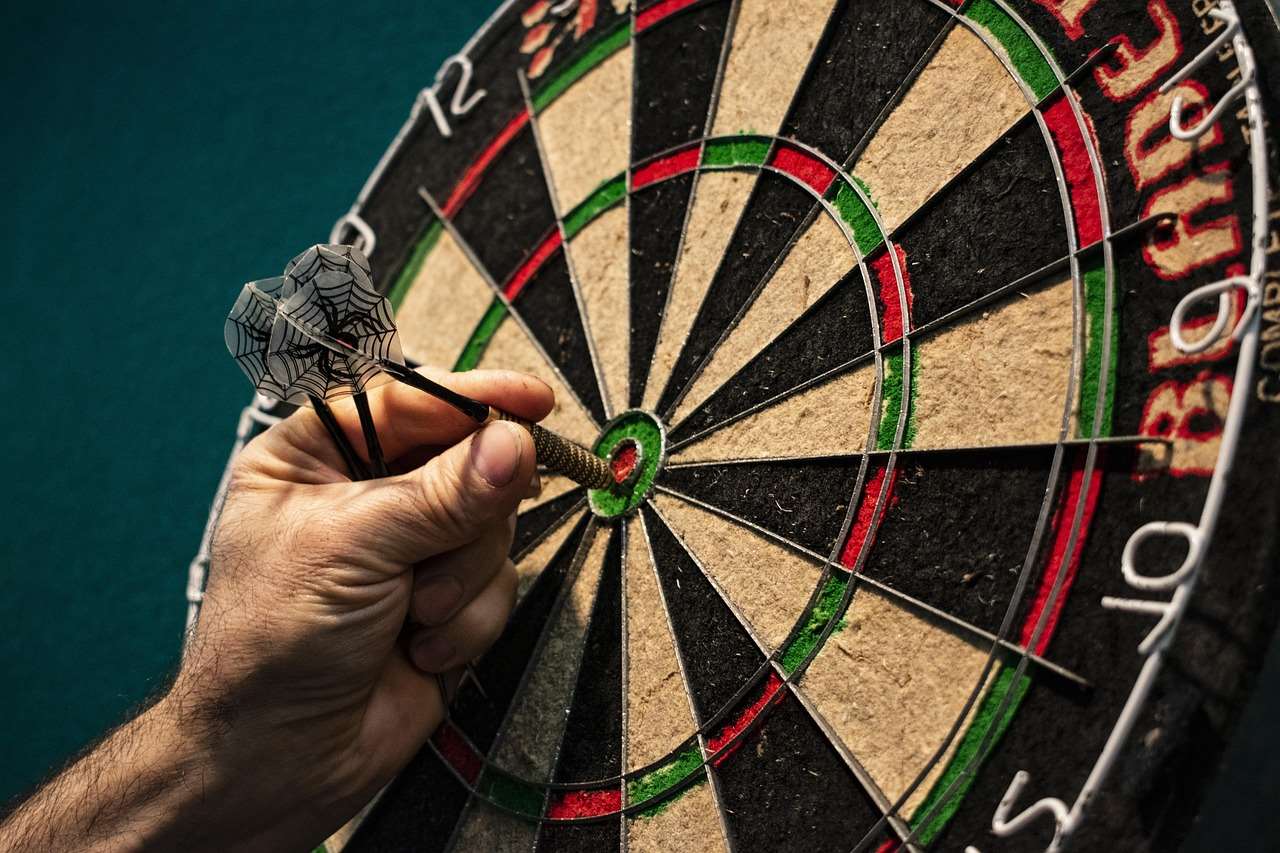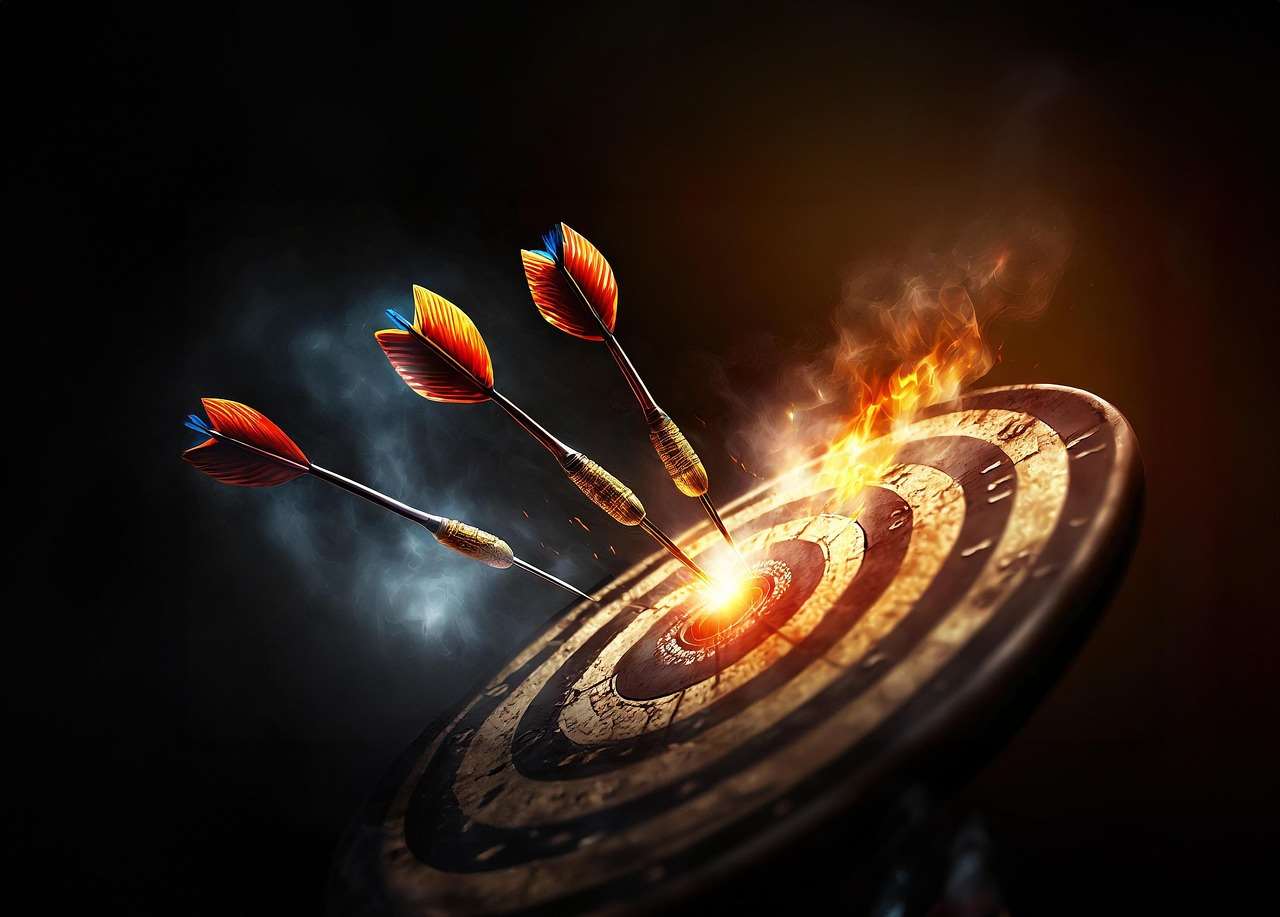Understanding and adhering to the **official rules darts** are paramount for fair play, consistent competition, and overall enjoyment of the game. This article delves into the significance of these rules, explores their various aspects, and offers insights into how they contribute to a more structured and fulfilling darts experience. You’ll learn about standard regulations, variations, and how to apply them effectively.
⚠️ Still Using Pen & Paper (or a Chalkboard)?! ⚠️
Step into the future! The Dart Counter App handles all the scoring, suggests checkouts, and tracks your stats automatically. It's easier than you think!
Try the Smart Dart Counter App FREE!Ready for an upgrade? Click above!
The Fundamental Importance of Official Rules Darts
The **importance official rules darts** cannot be overstated. They provide a common framework for all players, regardless of skill level or location, ensuring that everyone is competing under the same conditions. Without these rules, the game would descend into chaos, with each player potentially making up their own regulations, leading to disputes and frustration.
Following the official rules brings a sense of legitimacy and fair play to the game. It removes any ambiguity and ensures that victories are earned through skill and strategy, not through bending or breaking the rules. This fosters a more respectful and enjoyable environment for all participants.

Understanding the Official Darts Rules
The official rules of darts, primarily governed by organizations like the World Darts Federation (WDF) and the Professional Darts Corporation (PDC), cover a wide range of aspects, from the dimensions of the dartboard to the scoring system and the conduct of players. Let’s break down some of the key areas:
Dartboard Setup and Dimensions
The **dartboard** must be hung so that the center of the bullseye is exactly 5 feet 8 inches (1.73 meters) from the floor. The oche, or throwing line, must be 7 feet 9.25 inches (2.37 meters) from the face of the dartboard. These measurements are crucial for consistent play and ensuring that all players are throwing from the same distance.
The dartboard itself is divided into various sections, each with a different point value. The outer ring doubles the value of the section, while the inner ring triples it. The bullseye is worth 50 points, and the outer bullseye (single bull) is worth 25 points.
Scoring System
The most common darts game is 501, where each player starts with 501 points and must reduce their score to zero by hitting the appropriate sections of the dartboard. The final dart must be a double or the bullseye to win the game. This is known as a “double out”. Failure to do so results in a “bust,” and the player’s score reverts to what it was at the start of that turn.
Understanding the scoring system is vital for strategic play. Players must calculate their scores carefully to ensure they are setting themselves up for a double out. This involves not only accuracy but also mental arithmetic and planning.

Conduct and Etiquette
Darts is a game of skill and precision, but it also requires good sportsmanship and etiquette. Players should refrain from distracting their opponents or making excessive noise while they are throwing. It’s also important to maintain a respectful attitude and accept both wins and losses with grace.
Proper **darts etiquette** also includes waiting for your opponent to retrieve their darts before approaching the board and avoiding stepping over the oche while it is your opponent’s turn. These small gestures contribute to a more positive and enjoyable playing experience.
Variations on the Official Rules Darts
While the official rules provide a solid foundation, there are also numerous variations that can be used to add variety and excitement to the game. These variations often involve modifying the scoring system or the objectives of the game.
Around the Clock
In this variation, players must hit each number on the dartboard in sequence, starting with 1 and ending with 20. The first player to hit all the numbers wins the game. This variation is a great way to improve accuracy and focus on specific sections of the board. Adapting darts rules for beginners with this game is also a great way to help with their overall score.
Cricket
Cricket is a more complex variation that involves “opening” and “closing” numbers. Players must hit the numbers 20, 19, 18, 17, 16, 15 and the bullseye three times each to “open” them. Once a number is opened, the player scores points each time they hit it until their opponent also “closes” the number by hitting it three times. The player with the highest score and all numbers closed wins the game.

Killer
Killer is a fun and competitive variation where each player is assigned a number on the dartboard. They must then hit that number three times to become a “killer.” Once a player is a killer, they can target other players’ numbers to eliminate them from the game. The last player remaining is the winner. This game adds a layer of strategy and aggression to the traditional darts format. For individuals who are having a party, using creative dart rules for parties and social gatherings will surely get the party going!
Enforcing the Official Rules Darts
While it’s important to understand the rules, it’s equally important to have mechanisms in place to enforce them. This is especially crucial in competitive settings, where disputes can arise.
Designating a Referee
In formal competitions, a **referee** is responsible for overseeing the game and ensuring that the rules are followed. The referee’s decisions are final and binding, and they have the authority to penalize players for violations of the rules.
Even in casual games, it can be helpful to designate one person as the referee to resolve any disputes that may arise. This helps to maintain fairness and prevent arguments from escalating. This will also help with darts competitions.
Using a Scorekeeper
Accurate scorekeeping is essential for ensuring that the game is played fairly. A dedicated scorekeeper can track each player’s score and ensure that all calculations are correct. This eliminates the potential for errors and prevents any accusations of cheating.
There are also numerous digital scorekeeping apps available that can automate the process and provide real-time updates on the score. These apps can be particularly useful for complex games like Cricket, where tracking multiple numbers can be challenging.

Adapting Official Rules Darts for Different Skill Levels
The official rules are designed for experienced players, but they can be adapted to accommodate different skill levels. This is particularly important when playing with beginners or children.
Simplified Scoring
For beginners, it may be helpful to simplify the scoring system. For example, you could eliminate the requirement for a double out or allow players to start with a lower score, such as 301. The Simplified 501 game rules for novice players is the most commonly used rule set.
Another adaptation is to allow players to score even if they “bust” their score. This removes some of the pressure and allows beginners to focus on improving their accuracy without worrying about making mistakes.
Handicap Systems
For mixed-level groups, a **handicap system** can be used to level the playing field. This involves giving weaker players a starting advantage, such as a higher score or extra darts. Understanding how to make darts fairer with handicap rules is important to prevent arguments.
Handicap systems can be adjusted based on the players’ skill levels to ensure that everyone has a fair chance of winning. This makes the game more enjoyable for all participants and encourages players to improve their skills.

Benefits of Sticking to Official Rules Darts
Adhering to the official rules, even in casual games, offers numerous benefits:
- Fairness: Ensures that all players are competing under the same conditions.
- Consistency: Provides a standardized framework for all games.
- Skill Development: Encourages players to improve their accuracy and strategy.
- Respect: Fosters a more respectful and enjoyable playing environment.
- Preparation: Prepares players for competitive darts events.
By embracing the official rules, you can enhance your darts experience and take your game to the next level. Remember, understanding basic darts fundamentals for beginners is important, but sticking to the official rules is just as essential.
Conclusion
The **importance official rules darts** extends far beyond mere formality. They are the bedrock of fair competition, consistent gameplay, and a respectful environment. By understanding and adhering to these rules, players of all skill levels can enhance their enjoyment of the game and strive for excellence. Whether you’re a casual player or a seasoned competitor, embracing the official rules is a surefire way to elevate your darts experience. So, pick up your darts, familiarize yourself with the regulations, and get ready to experience the game in its purest form. Start practicing today and witness the improvements in your game!
Hi, I’m Dieter, and I created Dartcounter (Dartcounterapp.com). My motivation wasn’t being a darts expert – quite the opposite! When I first started playing, I loved the game but found keeping accurate scores and tracking stats difficult and distracting.
I figured I couldn’t be the only one struggling with this. So, I decided to build a solution: an easy-to-use application that everyone, no matter their experience level, could use to manage scoring effortlessly.
My goal for Dartcounter was simple: let the app handle the numbers – the scoring, the averages, the stats, even checkout suggestions – so players could focus purely on their throw and enjoying the game. It began as a way to solve my own beginner’s problem, and I’m thrilled it has grown into a helpful tool for the wider darts community.